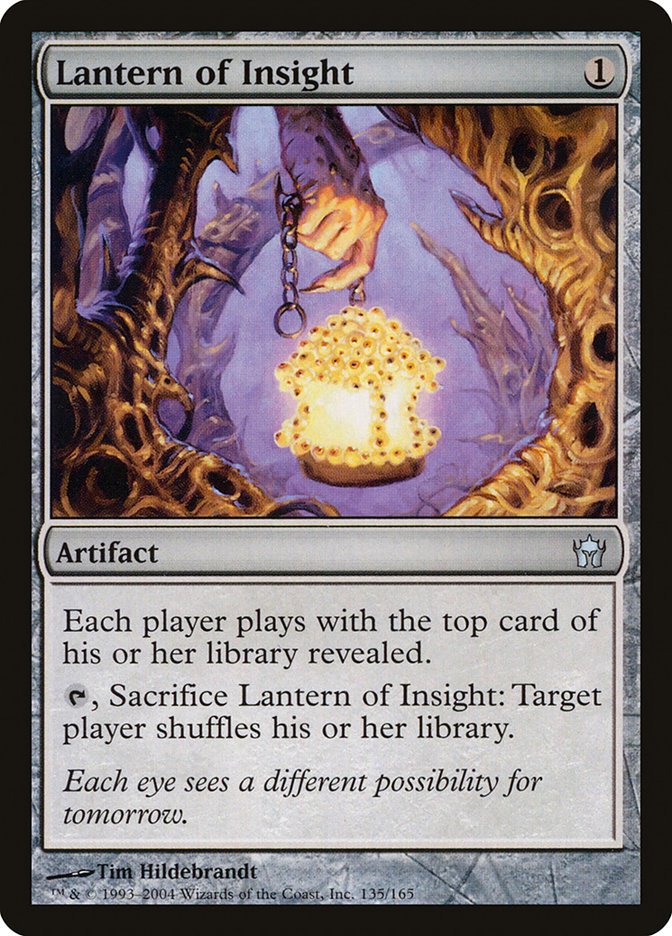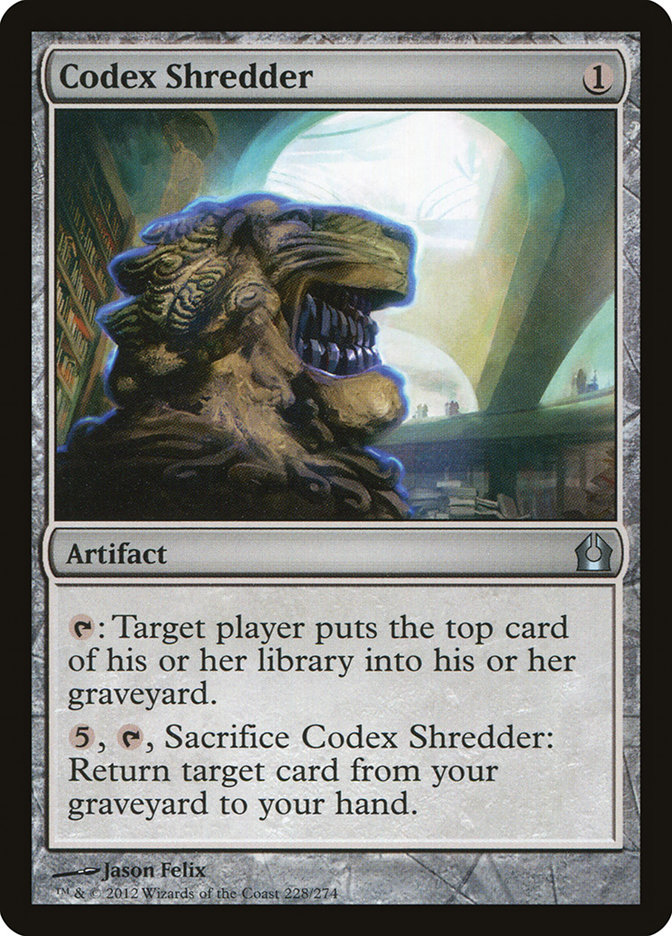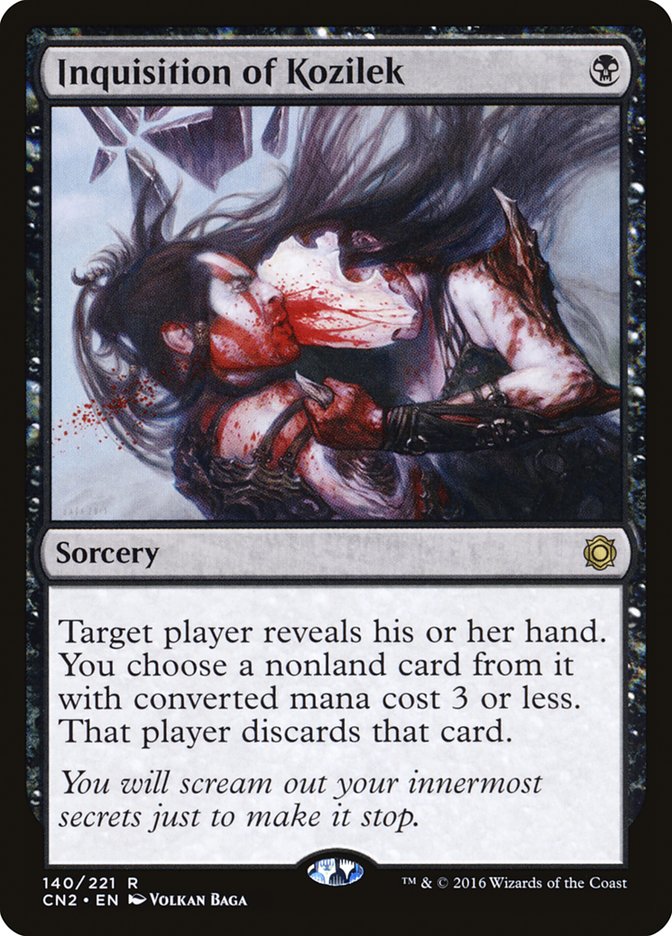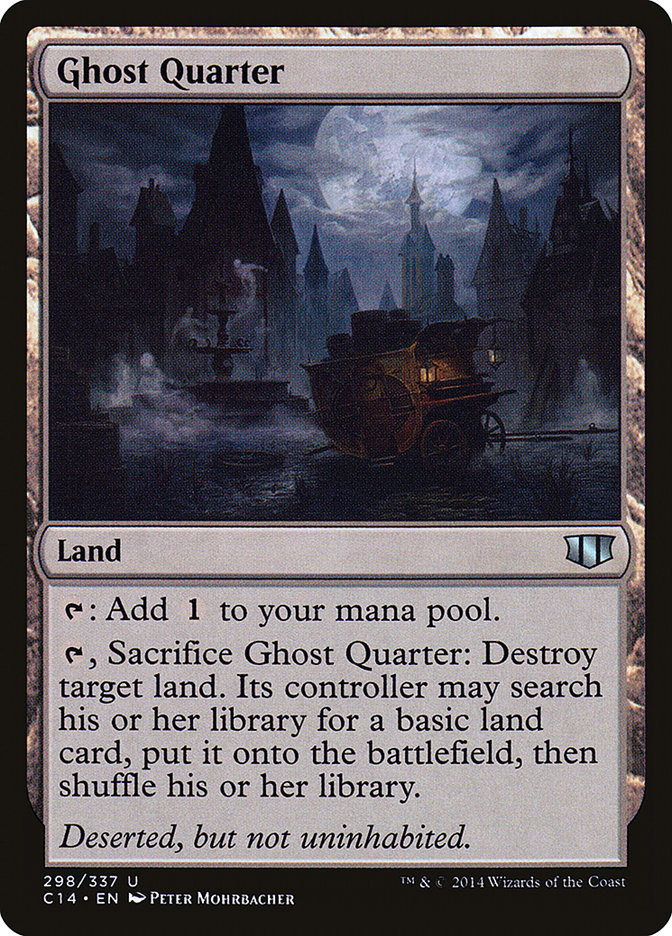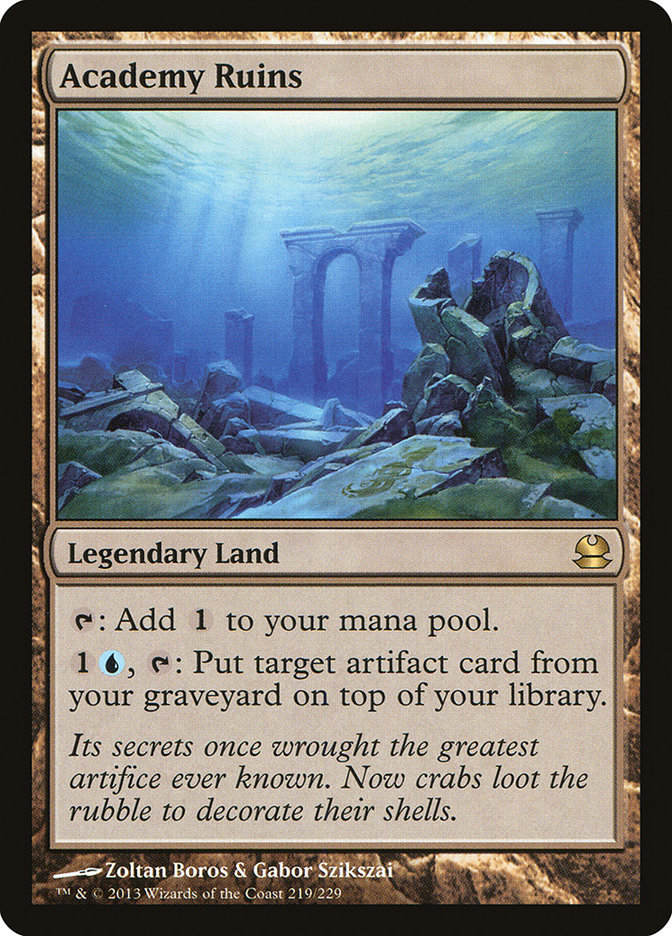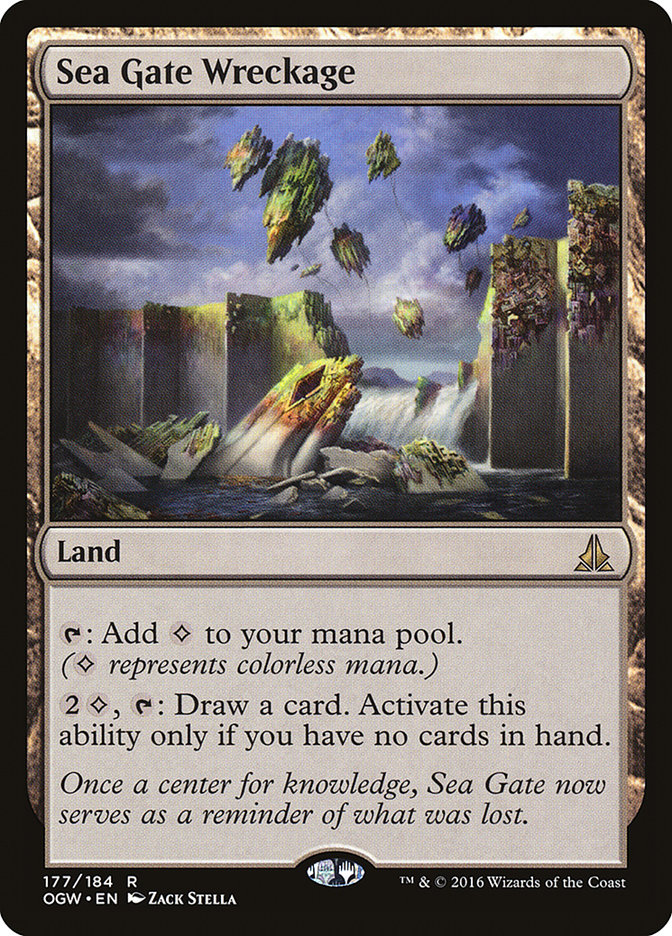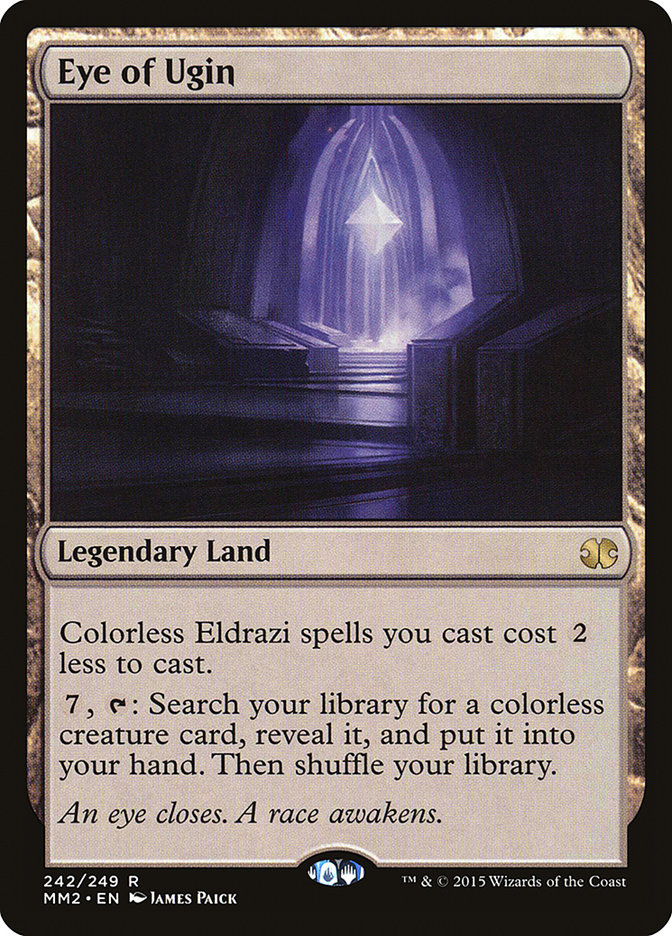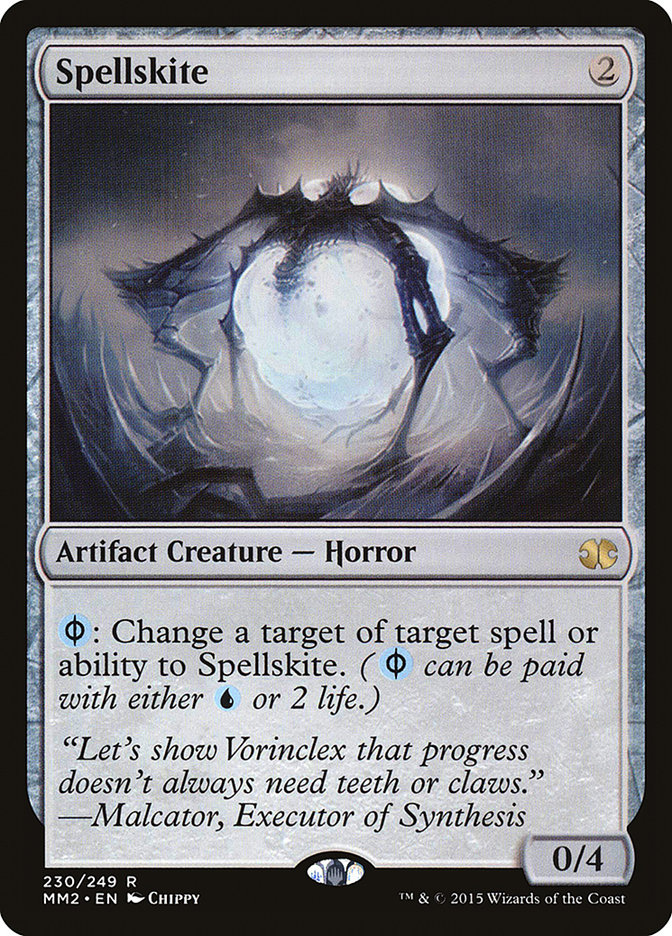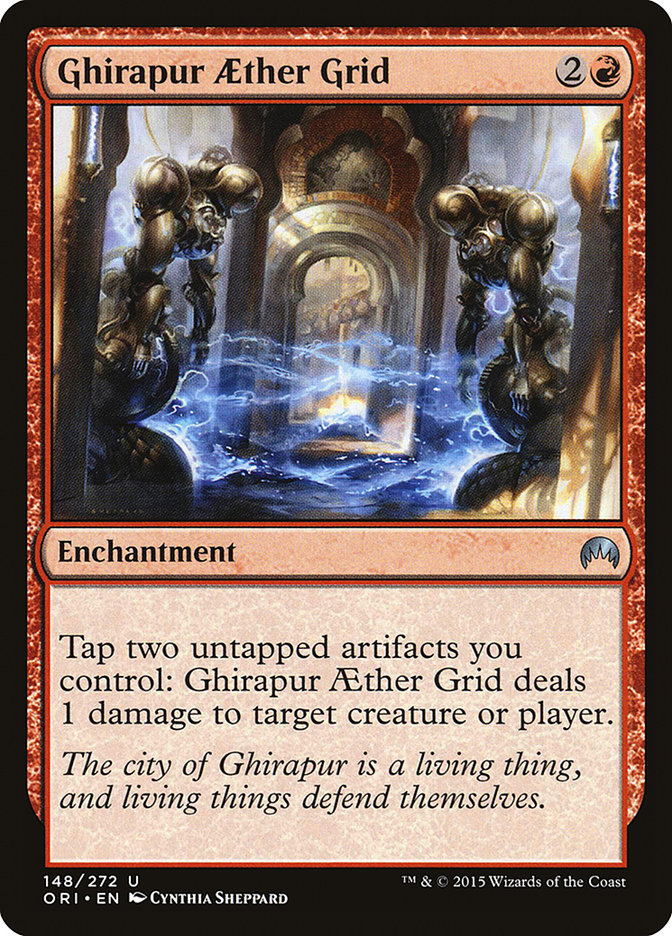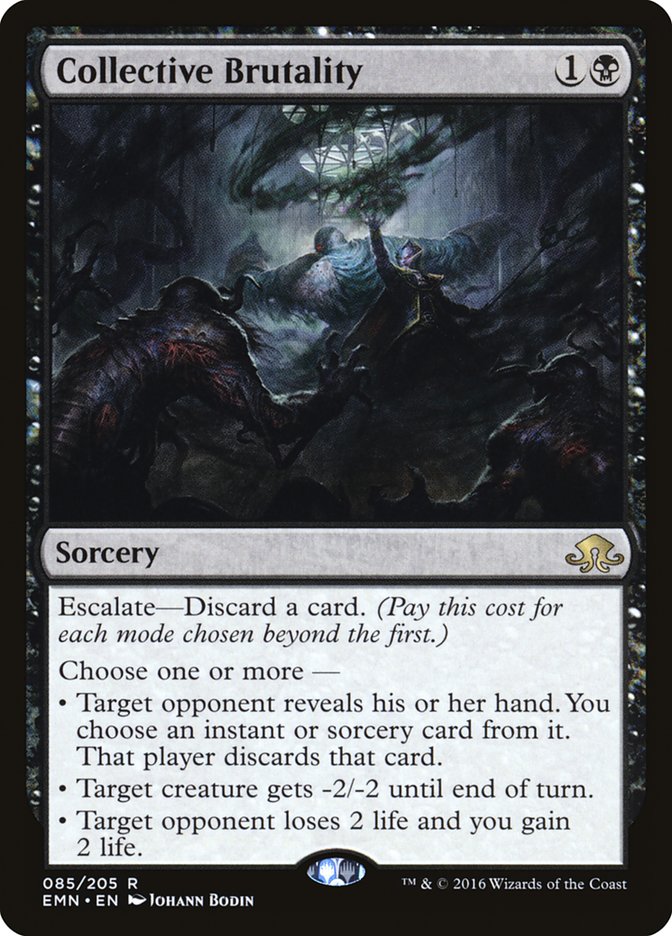This weekend I played Lantern Control to a 12-3 finish at Grand Prix Indianapolis. I wasn’t intending to write about the deck, but I think I might have gotten more requests on Twitter to talk about this than anything else I’ve ever played, so I figured I’d oblige.
Let me preface with a brief description of what Lantern Control is and how it works for those who might still be unfamiliar:
Lantern Control is a prison deck, a strategic archetype that was fairly common in Magic in the 1990s, but which we almost never see in the current era because there’s been a shift in design of Magic away from printing spells that make it difficult for your opponent to play the game.
(Aside: if you look through cards from the first couple years of Magic, you’ll be amazed by exactly how many of them make it impossible for your opponent to play spells or take relevant game actions. Alpha alone had:
All of those cards exist to make it impossible for your opponent to cast or resolve their spells, or impossible for their spells to have any impact. This is on top of a large number of counterspells and cheap removal, and the following sets roughly kept pace with this. Early Magic was very largely about just not letting your opponent play the game.)
Lantern Control is the only real prison deck that has snuck into Modern. It relies on Ensnaring Bridge to invalidate huge portions of opposing cards and then uses Lantern of Insight to look at what each player is going to draw every turn. Ghoulcaller’s Bell and Codex Shredder prevent the opponent from drawing an answer to Ensnaring Bridge or a way to win around it.
While not all decks in Modern rely on attacking with creatures to win, a large portion do, and those that don’t are generally looking for very specific spells to win, which means they’re easily broken up by Lantern of Insight anyway.
In order to execute its game plan, Lantern Control has to find Lantern of Insight, at least one card that allows them to control the top of a library, and Ensnaring Bridge in fairly short order. The most important card that holds this all together is Ancient Stirrings, which allows the deck to dig aggressively for whatever it’s missing. That’s still a lot of pieces to assemble, but the saving grace is that if you have Ensnaring Bridge but not Lantern of Insight, the Ensnaring Bridge can buy a lot of time against most decks, as they have few answers to artifacts, so you can have a lot of time to find Lantern of Insight; and if you have Lantern of Insight but not Ensnaring Bridge, you can use the mill pieces to effectively draw or dig an extra card closer to Ensnaring Bridge or Ancient Stirrings every turn.
The deck also has Inquisition of Kozilek, Thoughtseize, and Abrupt Decay to slow the opponent down, which can often give it a lot of time to get everything together.
When Lantern Control draws perfectly, the basic script is to cast Inquisition of Kozilek, Lantern of Insight, and Codex Shredder or Ghoulcaller’s Bell in the first two turns (bonus points if you can also play Mox Opal, and maybe use that for another mill piece or an Ancient Stirrings), and then play Ensnaring Bridge or Abrupt Decay on the third turn to stop your opponent from killing you. Then lock them out of drawing anything that matters and quickly assemble more mill pieces, using the leftover mills when your opponent’s top card is bad to improve your own draws, tightening your hold on their draw step.
In every game, you get to evaluate which resource your opponent is lightest on (mana, threats, answers) and deny them access to it, on your way to eventually denying access to anything that matters at all.
As it happens, almost every permanent that wins without attacking, which would be the other major threat to the deck, uses activated abilities to accomplish this. As a result, Pithing Needle, another artifact that can be found with Ancient Stirrings, is the perfect complement to Ensnaring Bridge.
The last point is that Lantern Control makes fantastic use of mana and lands: All of the spells are very cheap. Lantern Control has an extremely low curve that lets it execute its plan faster than other decks can execute theirs. Discard in particular is almost impossible to get under. Lantern also makes excellent use of the most unfair mana-producing card in Modern, Mox Opal (the only real competition is Lotus Bloom).
Mox Opal is among the absolute best cards in the game. Few decks can really use it, but when you can, it’s literally better than the original five Moxes; this is a Vintage-only power-level card that you not only get to use, but use to the fullest, as this deck uses all five different colors of mana (admittedly, white only very rarely), and having access to Mox Opal and Glimmervoid, which happens to be the best land in Modern when you can use it, allows this deck to play a large number of powerful colorless lands, a low land count, and reliably cast whatever it wants.
The utility lands this deck usually uses are Ghost Quarter, Academy Ruins, and Sea Gate Wreckage, each of which are absurdly powerful cards in context. While the spells in Lantern might look weak (I’d argue that they’re not), it’s undeniable that the manabase in Lantern is on par with Affinity as being the best in the format (by a fairly wide margin).
As B/G/x decks have demonstrated, the answers are varied enough to work against almost every (actually every?) strategy in Modern. This deck uses them in a unique, but extremely effective way.
So that’s the mini-primer. Now let’s get to this specific event:
I started thinking more seriously about playing Lantern Control while I was writing my article last week. I realized that the popular unfair decks seemed to be pushing people toward a rise in Abzan over Jund, or at least toward playing less artifact removal in Jund, and I thought it might be well-positioned. While Eye of Ugin was legal, Lantern Control gained some notoriety as a deck that could compete with Eldrazi, and then when Eye of Ugin was banned, I think people dismissed Lantern Control as a deck that was only played as a foil to Eldrazi. The fact of the matter is that I played Lantern Control in the last Modern Pro Tour, despite the fact that, while choosing it, I didn’t know Eldrazi would do well in the event.
Following that Pro Tour, Lantern Control may have had more favorable matchups, especially as Eldrazi pushed out some of the more hostile decks like Jund and Burn, but at the same time, that notoriety meant people were actually targeting it for the first time. In my quest to do the best thing people aren’t preparing for, I felt that now might be a good time to go back to Lantern Control, as it’d been neglected since Eye of Ugin’s ban.
Moreover, while Affinity had something of a strong showing at the StarCityGames.com Invitational, it still felt like people we cutting artifact hate from their sideboards (likely part of the reason for the strong showing) as they were simply forced to diversify their more narrow sideboard answers to combat other things, like the rise of Death’s Shadow Aggro and Dredge that demand specific other answers.
There was a small amount of potential splash damage from people attacking Death’s Shadow, as it meant there was an increase in the popularity of Engineered Explosives, but I felt like I could handle that. It’s very good against me, but at least it can be stopped with Pithing Needle.
For the most part, I think specific sideboard answers are a poor way to fight Lantern Control anyway, as it’s so good at denying an opponent from casting any particular spell, so the weaknesses come from decks where Lantern is structurally disadvantaged rather than from an abundance of hate. Tron, for example, has a lot of tools that make things very challenging for Lantern, but I felt like the prominence of Death’s Shadow and Infect made it difficult for people to choose to play Tron at the moment. In general, it looked like the format would be relatively soft to Lantern Control.
During the week, Justin Cohen and I tried Lantern Control on Magic Online, and our results were immediately sufficiently encouraging for me to settle on the deck, although Justin specifically did quite a bit better than I did, as I kept running into Blue Tron, which is a horrendous matchup. I didn’t think that would happen much at the Grand Prix.
After settling on the archetype, we spend a lot of time choosing the last few cards for our deck. As Justin puts it, there are around 55 cards you definitely want, and then you have to play five more to get to 60, and there are a lot of options. A lot of what happens there is selecting which cards you want in your sideboard that will be least painful to put in the maindeck, in order to effectively buy extra sideboard space.
In the end, I registered this:
Lands (18)
Spells (42)

Here, the Pyroclasm in the maindeck and the second Surgical Extraction are both cards that I wanted in my 75, but I wasn’t sure I wanted them in my starting 60. Pyroclasm is very bad against half the field, but it can be outstanding when it’s good, especially in Game 1, when it’s very hard to anticipate or play around. I considered playing a second Pyrite Spellbomb instead, as a lot of the time you want Pyroclasm, you’re only really trying to kill one creature, and it’s relatively painless to draw when it’s bad instead of completely blank. However, since I knew I’d want to have access to at least two Pyroclasms after sideboarding, I’d need to cut another card from my sideboard to make room for the second Pyrite Spellbomb, and that was unacceptable, so I paid a small cost in my maindeck by playing Pyroclasm instead of Pyrite Spellbomb to buy an extra sideboard slot.
Surgical Extraction is a card that I love in a spell combo- and Tron-heavy field, and I’ve played three main, one sideboard before, but there are a lot of decks where it’s pretty bad now. Like Pyroclasm, this card is only really good against half the field (at most) and its floor is pretty bad. It’s less painful than Pyroclasm in the maindeck because the amount of information I have often means I can just turn it into a discard spell (and sometimes just making them shuffle plays like a discard spell), and it also helps that it can give me perfect information about their deck, which is particularly valuable in Game 1.
Spellskite is another sideboard card that can potentially make its way into the maindeck. I played some with that configuration in the week leading up to the Grand Prix, and almost registered that. Ultimately, I decided I really didn’t want to turn on opposing creature removal in Game 1. The reason I wanted it was because I think it makes the Infect, Death’s Shadow, and G/W Hexproof matchups much better, and I thought beating those decks would be important this weekend, but I decided to address this by playing a relatively large number of Spellskites in my sideboard instead.
I was tempted to move the third Thoughtseize to the main. It’s a card with a relatively flat power level, in that it does something against everyone, so it should be relatively painless to maindeck as a way to buy a sideboard slot, but Justin convinced me that it’s too costly to have too much of that effect maindeck, especially with Thoughtseize, where you often get to a point where you really don’t want to lose the two life, but you have to cast it to get it out of your hand because of Ensnaring Bridge.
Sea Gate Wreckage is a card some people have expressed doubts about. There are concerns that, because you can’t activate it early, it doesn’t help you get set up, so it’s basically just a win-more and might not be worth the space compared to something like additional Ghost Quarters. This has not been my experience at all. Sea Gate Wreckage is incredible, and I think its printing vastly improved the quality of the deck. I think not playing at least two (probably exactly two) is a substantial mistake.
The cost to playing it is extremely low, and in return it massively improves all of your fair matchups. Counterspells and artifact removal that stop you from getting set up are among the most effective ways to combat Lantern Control, but as long as you can use your spells to stop them from pressuring you, you can grind out any amount of removal with Sea Gate Wreckage and Academy Ruins and eventually get set up. These matches get really grindy, and they have a really hard time beating this card. People who know a little about Lantern Control are surprised when I say that I think it’s favored against Abzan, and I think a big part of that it is that they haven’t updated for how impactful Sea Gate Wreckage is.
I’ve also found Sea Gate Wreckage to be an excellent way to beat Stony Silence. You can often find Ensnaring Bridge under Stony Silence, which buys you a lot of time, and Sea Gate Wreckage lets you get through your deck quickly to find Abrupt Decay to get out of it. (As an aside, Stony Silence is massively overrated as a card against Lantern Control; after sideboarding, I have eleven spells that answer a Stony Silence in someone’s opening hand: seven discard spells, three Abrupt Decay, and a Nature’s Claim. If it’s not in their opening hand, obviously they won’t draw it once I’m set up. Basically, I find that it usually needs to be a card they draw on turns 2-5 to be really effective, which is a pretty narrow window, and even then, it only helps if they can beat Ensnaring Bridge reliably, or I’ll just dig for that and deal with it eventually.)
So that was my list. There are a few cards people have asked about a lot that I didn’t play. First, Ghirapur Aether Grid. I like this card a lot. It’s sweet, and it gives a feeling of complete control very quickly and singlehandedly in a lot of matchups. It’s very powerful and ends games quickly. Ultimately, I think it’s one of those “training wheels”-type cards, the way I think I’ve seen Gerry Thompson discuss big threats in certain control strategies–if your play isn’t as tight as it could be, it’s very good at forgiving some mistakes and taking a game over by itself, but once you understand how the deck operates and how you need to deal with everything, I haven’t found it necessary for anything I’m trying to accomplish. It’s powerful, but it doesn’t fill any specific hole, and while it seems like a low opportunity cost to gain a lot of power, every three-mana card you add to the deck comes at a huge cost, as you very often need to empty your hand extremely quickly to turn on Ensnaring Bridge, and this kind of card gets in the way (Tezzeret, Agent of Bolas is the exact same thing).
The other major one is Collective Brutality. This card has gotten a fair amount of hype as a generally powerful card in Modern, and it’s great against Burn specifically, where Lantern Control could certainly use the help. It’s two mana, which is a little clunky for this deck, but given that the primary cost to cards being clunky is that they prevent you from emptying your hand, a card that lets you discard one or two other cards really doesn’t suffer much from that problem; instead, it can be a lifesaver if you’ve drawn too many lands and you can’t play them all quickly enough to empty your hand, or if you’ve drawn too many Ensnaring Bridges, or if you don’t have the life to cast a Thoughtseize you’ve drawn.
Honestly, this one could be good. I like my cards, and I’m not that excited about discarding them, and this is often just going to be a really horrible Thoughtseize, so I didn’t try it out, but I could easily see it exceeding my expectations.
I’ve spent a lot of time on fairly broad topics and entry-level discussion of the archetype. I’m sure that, in practice, what people who are looking for when they’re thinking about getting into a new deck in Modern is really a sideboard guide, because that’s often the hardest thing to figure out when you pick up a new deck (well, that and mulligans).
It’s tricky when there are a million decks in Modern, but I’ll try to cover some basics.
Starting at the top of Frank Karsten’s list of the top-performing archetypes from this weekend:
Affinity
In:
Out:
In this matchup, you’re well-equipped to control their battlefield and lock them out, so you don’t need to control their library as much. Because Affinity relies on a few cards to do the heavy lifting on killing you, and you have good, versatile answers to artifacts, you can often slow them down substantially even without an Ensnaring Bridge if you have two Abrupt Decay / Pyroclasm / other similar cards, or one and an Inquisition or Pithing Needle. That’s a good portion of your deck, so you can often live to get Ensnaring Bridge down. The trick is, they’re fast, even through some disruption, so you usually get to a fairly low life total here. Between that and the lack of library manipulation once you’ve cut the Bells, Thoughtseize is too much of a liability.
Once you have Ensnaring Bridge, your opponent has the following paths to win:
1: Galvanic Blast you out.
2: Attack with a zero-power creature and equip Cranial Plating to it at instant speed.
3: Attack with a zero-power creature and make it lethal by sacrificing everything to Arcbound Ravager, then sacrificing Arcbound Ravager to move the counters over.
4: Nickel-and-dime you with Signal Pest and other zero-power creatures.
Use your removal, library lock, and Pithing Needle to cut off each of these plans. Their battlefield will inform whether you want to stop them from drawing/keeping Arcbound Ravagers and Cranial Platings or Ornithopters and Signal Pests (don’t let them have the one they don’t already have).
Infect
In:
Out:
I’m not exactly sure about the correct number of Pithing Needles, Bells, and artifact removal, and I’m also not sure that you want to cut Sea Gate Wreckage or Infernal Tutor. The thinking is that the matchup is too fast for Infernal Tutor or Sea Gate Wreckage.
Pithing Needle is a great answer for Inkmoth Nexus, but that’s basically all you want to do with it (though extras can be find for fetchlands or Pendelhaven), but they aren’t always on an Inkmoth Nexus draw, so it’s possible you want to cut one, or maybe that you’re not supposed to bother with Nature’s Claim because Needle is a better way to answer Inkmoth Nexus.
Here, Spellskite buys you a lot of time, and the only way they can beat Ensnaring Bridge is by destroying it or attacking with Noble Hierarch. If you have a Spellskite, Noble Hierarch can’t get through, so if you can protect a Spellskite and an Ensnaring Bridge, you win.
Discard is great for slowing them down or protecting/resolving Ensnaring Bridge. You definitely want all of it. Again, you can cut a lot of Ghoulcaller’s Bells because they have very few cards that matter once you’re set up, so you don’t need as much library control; also, Belling early without information is bad because it turns on Become Immense.
Bant Eldrazi
In:
Out:
I’m not sure exactly how many Pyroclasms you want in. They’re good for controlling Noble Hierarch, but sometimes you don’t actually want to kill their Matter Reshapers. Going to zero is perfectly reasonable.
This is another matchup where you basically just need to protect Ensnaring Bridge and stop their Noble Hierarchs, and Spellskite covers that. Pithing Needle names Eldrazi Displacer, Engineered Explosives, and possibly World Breaker.
If you know they have a lot of Engineered Explosives, consider bringing in Welding Jar to protect Ensnaring Bridge. That and Stony Silence are your main concerns. The only other way they win is to kill you before you find a Bridge, which is most likely if they can play Thought-Knot Seer before you have three mana. Thoughtseize is an all-star here.
Burn
In:
Out:
This matchup’s tough, but if you can answer their early creatures you can lock them out. The dedicated sideboard cards (Leyline of Santity and Sun Droplet) are absolutely huge here if they live.
Jund
In:
Out:
Jund has tons of relevant cards, so you need to be able to lock them hard, so I don’t like cutting any Ghoulcaller’s Bells. I like cutting discard because the game goes long, but if I know they have Shatterstorm, I might leave in Thoughtseize; similarly, if I know they have multiple Ancient Grudges, I’ll bring in Grafdigger’s Cage. You can also cut a Mox Opal. Pyroclasm is also very much up for debate, depending on how many Dark Confidants and Scavenging Oozes they have.
You need to Pithing Needle Liliana of the Veil, try to kill Dark Confidant, and either kill Tarmogoyf or stick an Ensnaring Bridge. The matchup is hard because Tarmogoyf gives you very little time, so if it lives, you’re unlikely to beat a removal spell on Ensnaring Bridge. If you can get out of the early-game without that happening, you’re likely in good shape, especially if you can find a Sea Gate Wreckage.
R/G Tron
In (plus a flex slot):
Out:
There’s a case to be made for Spellskite or Grafdigger’s Cage (if your opponent has a lot of Ancient Grudges, which they likely do), possibly over Inquisition of Kozilek.
This matchup is weird. The best thing you can do is get one of their Tron pieces in the graveyard and Surgical Extraction it. If you can do that, you can execute a mana denial strategy and stick them with expensive stuff.
Most of the time, you can’t do that, and you have to let them get mana. Then you need to use information gained from discard spells and Lantern of Insight to Needle the correct things. Pithing Needle is among your best cards, as it can name Karn Liberated; Ugin, the Spirit Dragon; Expedition Map; and Oblivion Stone. You’ll almost certainly have to needle some of those to win.
Lantern of Insight is the most important thing. Ensnaring Bridge is a distant concern; you want them in because sometimes they don’t sideboard out very many Wurmcoil Engines and you need to find it eventually, but depending on how your opponent sideboards, you can sometimes cut more (to bring in Spellskite) and you shouldn’t prioritize finding it early.
Death’s Shadow Zoo
See Infect, modify slightly, cut Needles.
Jeskai
In:
Out:
This is very approximate, and it really depends on their list.
I think the matchup is pretty good. Your stuff is cheap enough that it’s pretty easy to get through their counterspells, and they don’t pressure you well, so you have lots of time to set up.
Those are the top eight decks of the format as it stands, which should only cover around half of your opponents, but I think it offers a reasonable idea about what kinds of cards you’re looking at cutting, and it’s generally easier to figure out what to add.
Overall, I think Lantern Control is still very well-positioned and very powerful. Several opponents told me they’d never played against the deck before, and despite my writing about it, I expect that to continue for a while, as the fact that the deck uses weird cards makes it hard for people to casually assemble and try out. Games take a long time, so no one really goes out of their way to test against it, and very few people play it, so it’s hard to find someone competent to test against anyway. In a format where everyone’s played against everything a lot of times before, because the format is old and doesn’t change much, it’s a good way to gain some benefit from a disparity of familiarity without needing to build a new deck.



